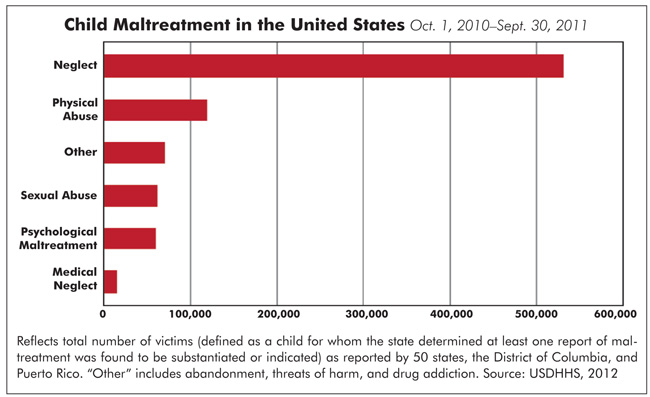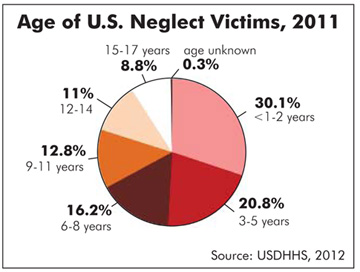We know a fair amount about child neglect. For example, we know it is the main reason families come to the attention of Child Protective Services in North Carolina (Duncan, et al., 2012). As the figure below illustrates, that’s also true across the United States.

We also know that neglect disproportionately affects younger children. In federal fiscal year 2011, 50% of child neglect victims were five years old or younger; 30% were age two or younger. The statistics for medical neglect were quite similar (USDHHS, 2012).

This, of course, is not good. As the National Scientific Council on the Developing Child (2012) points out, significant neglect—especially early in life—can hurt children’s physical and mental development, impair their ability to cope with adversity, compromise their immune systems, and put them at risk for emotional, behavioral, and interpersonal relationship difficulties later in life.
Unfortunately, we know less about the most effective ways to help families struggling with neglect. At present the California Evidence-Based Clearinghouse for Child Welfare lists just four programs as having adequate evidence to prove their effectiveness with neglect. We profile one of these, SafeCare, in this issue.
But we’re learning more all the time. Researchers are working hard to ensure that in the future we will be better able to respond to—and prevent—neglect. In the meantime, child welfare professionals continue to do all they can to address this daunting challenge.
We hope this issue of Children’s Services Practice Notes will help them with this important work.
Contents of this Issue